Ryan Hall's Blog, page 179
March 27, 2017
Salomon Launches Clean Sport and Athlete Transparency Initiative
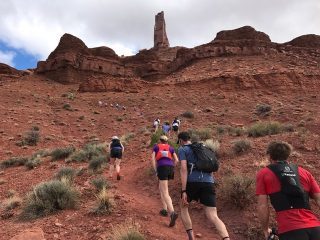
The announcement was made at the 2017 Salomon Ultra Academy in Moab, Utah. Photo: Sam Winebaum
The world of professional and even age-group endurance athletics has been plagued by performance enhancing drug (PED) scandals and suspicions to the point that many exceptional athletes and performances seem to come under automatic suspicions.
Trail and ultra-running is rapidly growing in popularity with athlete sponsorships and prize money, and it too is beginning to be wracked by PED rumors. In response to this, Salomon announced on March 22 its Athlete Transparency Program and race series sponsorship of five major trail races that will be related to the clean sport initiative.
Kilian Jornet, the preeminent star of the sport and a Salomon-sponsored athlete stated,“I trust that trail running is a clean sport and I can’t understand cheating in a sport that is more about a connection with nature. But since it is also a performance-driven sport with competition, it is important to be clear that we are clean.”
The Athlete Transparency Program will be one of the strictest and most transparent of any testing program by a sports brand or sports federation to date. In 2017, 16 top Salomon athletes, including Jornet, will be randomly tested up to 10 times per year by the totally independent Quartz program affiliated with Athletes for Transparency. Other testing conducted by official agencies such as the WADA (World Anti Doping Agency) will also be included in the review by Quartz. Athlete contracts will clearly state the requirements and the consequences of any violation.
RELATED: Athletes, Coaches, Advocates Support Launch of Clean Sport Collective
Further TUE’s (Therapeutic Use Exceptions), sometimes abused as “legitimate” prescriptions that can provide performance benefits, will not be allowed for Salomon athletes without specific approval by an independent physician affiliated with Quartz. If the athlete has TUE’s that have not been independently reviewed and approved they will be considered too sick to race. Athletes will be required to report their locations at all times, and list all supplements, prescriptions, and medications. This information will also provide a record keeping platform for responding to the formal anti-doping control protocols.
“As a leader in the sport of trail running, we feel it’s important to be at the forefront of efforts in the area of clean sport,” said Greg Vollet, Salomon’s Global Trail Running Sports and Community Marketing Manager. “We are initiating this program to create a tool for athletes to prove their integrity; to show that they are clean and to continue to uphold the honor and values of the sport we all love.”
Not just a testing program for PEDs, the program will seek to help athletes better manage their health, identify pathologies and other emerging health issues, including those potentially affecting performance.
RELATED: The Effects of Performance Enhancing Drugs On An Athlete
Salomon athlete, World Mountain Running champion and top ultra-runner, Max King has been subject to mandatory anti-doping controls for many years. Competitor interviewed him about the new program at Salomon’s Ultra Running Academy in Moab, Utah, this week and King said: “The program has the potential to change how anti-doping is analysed in our sport. My hope is that anything we do keeps the sport clean for future generations and keeps the playing field level.”
Salomon will also sponsor five major trail races in 2017. The five races on which the brand will focus its initial clean sport and athlete transparency efforts include the Maxi Race in Salomon’s hometown of Annecy, France; the Mont Blanc Marathon in Chamonix, France; the Swiss Alpine Marathon in Davos; the Glen Coe Skyline in Scotland; and the Ultra Pireneu in Spain.
The races will have extensive media and social media coverage, community and educational events and will help pay travel expenses for top-ranked athletes, from all brands, to compete for prize money.
In relation to Salomon’s new Transparency Program, all top non-Salomon invited athletes will be asked to optionally submit to testing three weeks before the race and the day before. All podium winners will be tested after the race as well. The testing will be mandatory for all top-ranked Salomon and non-Salomon athletes for 2018 races and will include a ban of any day-of-race TUE’s for corticosteroids, asthma medications, which can be abused for performance benefits.
Upholding the health education focus, these Salomon-sponsored races will also include, for all participants, educational conferences on anti-doping control that discuss causes of positive controls, the use of food supplements—which can sometimes contain un-labeled banned substances—and the dangers of over-indulgence of anti-inflammatories such as Ibuprofen.
RELATED: What Motivates Some Runners to Cheat?
The post Salomon Launches Clean Sport and Athlete Transparency Initiative appeared first on Competitor.com.
Two World Records Set In The Indoor Marathon This Weekend
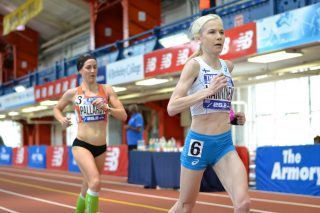
Photo: Myles Gaymon
This weekend, several runners ran record-setting marathons but at an unexpected venue—an indoor track.
The 2nd Annual NYC Indoor Marathon Presented by the New York Road Runners hosted the World Record Challenge, where participants raced 26.2 miles by completing 211 laps of the 200-meter indoor track.
Top male finisher Christopher Zablocki of Essex, CT, set a new world indoor marathon record, finishing in 2:21:48. Zablocki just came under the old mark of 2:21:56, set by Malcolm Richards.
Lauren Manninem, of Finland, trailed second place finisher Kate Pallardy for much of the race, moving into first place with 40 laps to go. Her time of 2:42:30 easily beat the previous world indoor marathon record of 2:44:44, set last year by Allie Kieffer.
Pallardy, a member of New Balance Central Park Track Club and mother of two, set a new American indoor marathon record, finishing the race in 2:44:11. “Unfortunately, to be very honest, it wasn’t what I was going after,” Pallardy said of her new race. “I wanted the world record so I must go back. I’ll take solace in the fact that I have the American record but really it is only because there are only few dumb enough to run 211 laps.”
While 26.2 miles on a track may seem daunting, Pallardy enjoyed the challenge. “I have raced everything from Ironmans, 50 and 100 milers, to every road distance imaginable so I was excited to line up for something new.”
In addition to the World Record Challenge, over 100 relay teams competed in the indoor marathon throughout the weekend. Proceeds from the race benefit the Armory College Prep program.
RELATED: The Winter Road Racing Alternative—Indoor Marathons
The post Two World Records Set In The Indoor Marathon This Weekend appeared first on Competitor.com.
This Act Of Kindness During A Half Marathon Is Going Viral
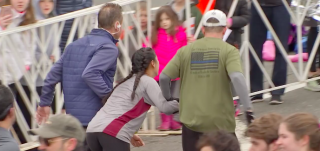
Bryan Crnkovic and Joseph McGinty didn’t think it was a big deal when they helped a fellow runner finish at the Philadelphia Love Run Half Marathon this weekend. However their act of kindness is now going viral.
Crnkovic and McGinty, both from Pennsylvania, saw a woman struggling to make it to the finish line towards the end of the race. The men, along with another runner in blue, attempted to help her along until McGinty picked up the woman. He ran with her in his arms until right before the finish line, where they helped her to cross on her own.
The men told Fox 29 in Philadelphia that they never expected to get so much attention. “It’s just what we do. You see someone that needs help, and you just want to help.” The runners were nearing the finish line just under the 2-hour mark and wanted to help the woman reach her goal. “She trained hard,” they explained. “Why shouldn’t she hit it?”
The video, posed by Fox 29, quickly gained millions of views, prompting others to share their praise of the runners involved and their own inspiring stories. “This is why I run,” noted Facebook user Stephanie Kathleen. “This community is some of the best people I have met. It’s so inspiring. From the woman who will do anything to finish to the men who sacrificed their times for her. Incredible.”
Watch the video below and read more about the story here.
RELATED: ‘What Are Ya’ll Running From?’ Tennessee Half Marathon Hecklers Go Viral
The post This Act Of Kindness During A Half Marathon Is Going Viral appeared first on Competitor.com.
World Marathon Majors Introduces New Prize Structure and Charity Program
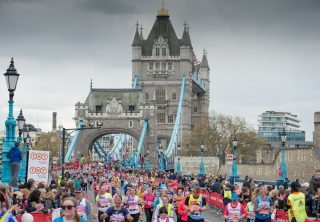
The AbbottWMM Series XI begins at the Virgin Money London Marathon on Sunday, April 23, 2017. Photo: Courtesy of Abbott World Marathon Majors
(c) 2017 Race Results Weekly, all rights reserved
The Abbott World Marathon Majors announced last week that a new prize money structure would go into effect with AbbottWMM Series XI, which begins at the Virgin Money London Marathon on Sunday, April 23, 2017, and ends at the same race in 2018.
The series prize money has been restructured to recognize and reward the top-3 men’s and women’s finishers in both the open and wheelchair categories. Previously, only the individual champions received prize money ($500,000 each for the top men and women).
In addition, through a new charity program, a total donation of $280,000 will be made in the name of the race winners of the seven commercial races that make up Series XI, which include the 2017 Virgin Money London, BMW BERLIN, Bank of America Chicago and TCS New York City Marathons, and the 2018 Tokyo, Boston, and Virgin Money London Marathons. The 2017 IAAF World Championships marathon is also part of the series.
Each race winner in the open and wheelchair categories will be honored with an AbbottWMM $10,000 donation, in his or her name, to a charity of his or her choosing.
“The race directors of the Abbott World Marathon Majors want to acknowledge the top three athletes, rather than just the winners, and also to reflect the reason to run for so many of the hundreds of thousands who participate in our races,” said Tim Hadzima, AbbottWMM general manager, in a media statement. “Many of the runners who cross our iconic finish lines every year fundraise an incredible amount of money for charity.”
The current AbbottWMM cycle, Series X, concludes with the Boston Marathon on Monday, April 17, 2017. The leader board positions of athletes contending for the titles can be viewed at worldmarathonmajors.com.
RELATED: 6 Fun Facts About the World Marathon Majors
Races For Series XI
April 23, 2017 Virgin Money London Marathon
August 6, 2017 IAAF World Championships Marathon
September 24, 2017 BMW BERLIN Marathon
October 8, 2017 Bank of America Chicago Marathon
November 5, 2017 TCS New York City Marathon
February 25, 2018 Tokyo Marathon
April 16, 2018 Boston Marathon
April 22, 2018 Virgin Money London Marathon
Scoring System and Prize Money For Series XI
The three athletes in the open and wheelchair divisions with the highest amount of points will be awarded prize money. The scoring remains the same as in past series, with athletes earning points by placing among the top five in Qualifying Races:
1st place – 25 points
2nd place – 16 points
3rd place – 9 points
4th place – 4 points
5th place – 1 point
Prize money will be awarded as follows:
OPEN MEN & WOMEN: $250,000 – 50,000 – 25,000
WHEELCHAIR MEN & WOMEN: $50,000 – 25,000 – 10,000
Charity Program Details
Runners in the six AbbottWMM races raise approximately $150 million for charity every year through individual fundraising. In Series XI, AbbottWMM adds a charity program, donating a total of $280,000 to different charities during the year.
Beginning at the 2017 Virgin Money London Marathon, the men’s and women’s open and wheelchair champions will work with race organizers to choose a charity to receive $10,000 in their names, on behalf of the Abbott World Marathon Majors. This will be replicated at each of the Series XI races in Berlin, Chicago, New York City, Tokyo, Boston and London 2018 marathons to result in a total donation of $280,000 from AbbottWMM.
Each race organizer will decide the process for the selection of the charities for their race and full details will be announced by each during the build-up to the race.
RELATED: World Marathon Majors Debuts “Six Star” Finisher Medal
The post World Marathon Majors Introduces New Prize Structure and Charity Program appeared first on Competitor.com.
March 26, 2017
United Airlines Rock ’n’ Roll Half Marathon San Francisco Photos
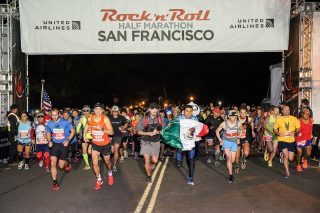
More than 9,000 participants took flight at this morning’s United Airlines Rock ’n’ Roll Half Marathon San Francisco in an ideal day for running with temperatures in the low-50s. David Urista from Daly City and Rachel Wood of Great Britain were the top finishers, breaking the tape in 1:14:36 and 1:25:34 respectively. The event’s first ever Running Panda took off with the elites and broke his own finish line tape in 1:36:33. Runners from all 50 states and 39 countries took part in today’s half marathon and in true Rock ‘n’ Roll fashion, local band Monophonics, rocked the finish line concert in Civic Center Plaza in a post-race celebration.

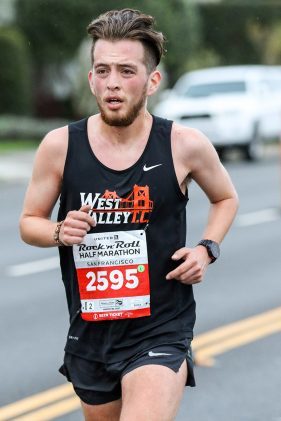
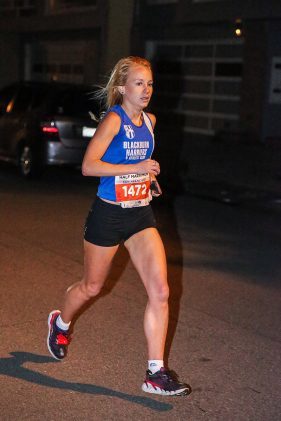


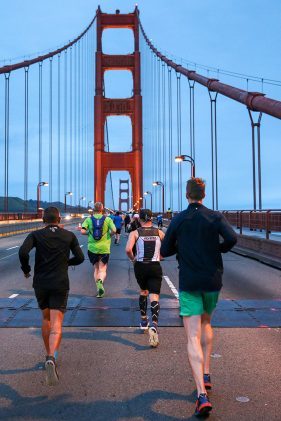



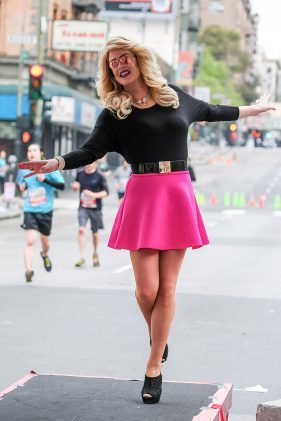


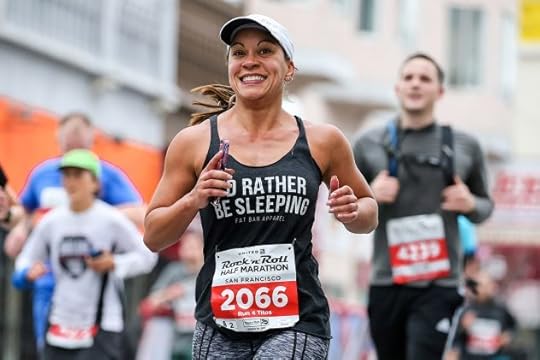










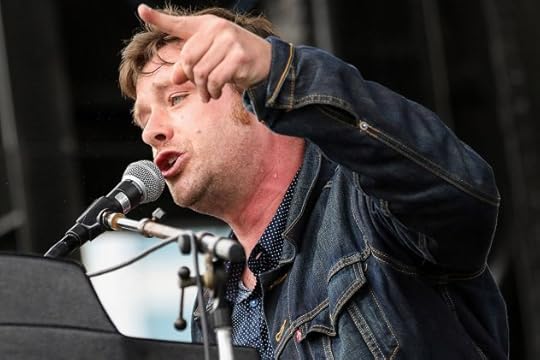

The post United Airlines Rock ’n’ Roll Half Marathon San Francisco Photos appeared first on Competitor.com.
March 24, 2017
Air Max Day Celebrates 30 Years Of Nike’s Iconic Running Shoe
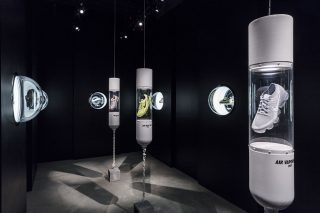

On Sunday, March 26, Nike and sneaker heads the world over will be celebrating a holiday largely unknown outside the shoe world: Air Max Day. It’s to commemorate the launch of the original Air Max 30 years ago, in 1987.
Although the Nike Air Max has stopped being considered a serious running shoe years ago (more on that later), it’s hard to dispute that it’s the most influential running shoe ever to crossover into athletic style and pop culture. Nike still sells thousands and thousands of them every year—we’re talking styles that are 20 to 30 years old. Needless to say, the designs have held up well, with successive generations coveting them just as much as people did in the ’80s and ’90s.
Never one to miss a marketing or sales opportunity, Nike is rolling out a lot of exclusive shoes in incredible colorways to celebrate (more on that later as well)—including an all-new Air Max that once again aims for performance. But Nike is also releasing a few sexy iterations of the very first version of them all: the Air Max 1.
The Beginning
Nike had been putting sealed air units in shoes since 1979, starting with the Nike Air Tailwind. The idea behind putting air in a midsole, proposed by a NASA engineer named Frank Rudy, was that it would be theoretically lighter than midsole foam, and would not wear out or break down like foam either. For the next eight years, as Nike grew, it expanded and promoted this easy-to-understand technology. But all that time, the “air” was buried inside the midsole. Nike’s designers, including the legendary Tinker Hatfield, who created the Air Max 1, wanted the technology to be visible. Plus, the thought went, the more midsole foam you replace with “air,” the better.
 Nike Air Max 1, Photo: Courtesy of Nike
Nike Air Max 1, Photo: Courtesy of Nike
Hatfield, who, along with other Nike designers, takes inspiration from a fascinating array of sources, claimed to be inspired by the inside-out architecture of the Centre Pompidou in Paris. By moving the seams around on the air bag, they were able to create a “window” in the midsole, with the Air Sole on display, in the original Air Max.
The shoe was audacious looking—and an instant hit in a time when running biomechanics were less popularized and polarized than now (just look at the heel strike in this ad!).
Other iconic designs included the Air Max 90, the Air Max 95 (with a visible forefoot Air Sole, for the first time) and Air Max 97 (with a full-length—and fully visible—Air Sole).
RELATED: Nike Unveils Shoes Designed to Run a Sub-2-Hour Marathon
30 Years Later
As running shoes have evolved and followed various design trends, the raison d’etre of the Air Max—the pursuit of a strictly air-filled, foam-free midsole—eventually found its performance limitations.
However, Nike is aiming to change that with the release of the all-new Air VaporMax on … Air Max Day. At $190, the shoe is blessed with Nike’s beloved Flyknit upper, and a full-length, segmented Air Sole solves some flexibility issues. It’s also unexpectedly light, at 8.5 ounces. We haven’t run in it yet, but it’s already gotten good reviews elsewhere from Swoosh-covered testers.
 Nike Air VaporMax, Photo: Courtesy of Nike
Nike Air VaporMax, Photo: Courtesy of Nike
Also dropping throughout the month of March are special-edition versions of those special old iterations of the Air Max. They’re happening online, at specialty sneaker shops, and at Nike’s Sneakeasy locations in several cities—New York, Toronto, Chicago and Los Angeles—which will also feature historical Air Max exhibits, bus rides, musical performances and more. You can follow each of Nike’s city handles on Twitter to learn more or get limited tickets to these events, or download Nike’s SNKRS app.
Everyone else on Air Max Day can create and order customized NIKEiD versions of the VaporMax and a Flyknit version of the Air Max 1 online. Choices include uppers in OG red and white, or an array of colors; midsoles/Air Soles in white, clear or bright yellow volt; and side graphics in a choice of heritage designs.
But even if you manage to live through Sunday without recognizing Air Max Day or swooping up a brand-new pair, they’ll still be available. Nike restyles them every season—and they obviously never go out of style.
RELATED: A Behind-The-Scenes Glimpse Inside Nike’s World Headquarters
The post Air Max Day Celebrates 30 Years Of Nike’s Iconic Running Shoe appeared first on Competitor.com.
David Roche’s Coaching Philosophy For Trail Runners
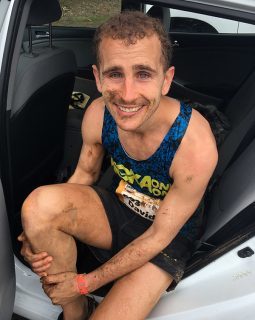
David Roche at the 2017 USA 50K Trail Championships where he won 3rd place. Photo: Megan Roche
As coaches and accomplished trail runners, David and Megan Roche could easily be called the “first couple of trail running.” David, coached by Megan, recently took 3rd at the USA 50K Trail Championships, and he has two previous USA Trail 10K titles under his belt. Meanwhile, David also coaches Megan, and just helped her attain recognition as USATF Trail Runner of the Year in both ultra and sub-ultra distances. She is a four-time national trail champion, six-time member of Team USA, and if that’s not enough, she’s also a fourth year medical student at Stanford where she is researching running, injuries, and biomechanics.
In 2013, David, who lives in the Bay Area, started Some Work All Play (SWAP), a community of 100 runners all personally coached by him. In this group are dozens of elite athletes, including Megan, 2016 Leadville 100 winner Clare Gallagher, and International Skyrunning Champion Hillary Allen. We sat down with David to learn more about his coaching philosophy.
How did you get into running and coaching?
“I went to college to play football at Columbia, and considered myself a sprinter and weightlifter. I didn’t even last through my entire freshman year—I found myself as a 200-pound ex-football player at 18 or 19 in New York City after growing up in a farming area of Maryland. I felt lost in geographic place. Running started right after that as a means to find dirt and escape the concrete and rush of humanity that you get in New York City. I thought 5 miles was excruciatingly far at the time. The really cool thing is that the experience of coming into running later in life and having no coach as a kid to tell me what to do is shared with a lot of trail runners. That experience gave me unique insight into what runners face and laid the groundwork for getting into coaching.”
What’s your coaching philosophy?
“Whenever you make a decision about running, it should be about what will make you a better runner in three years. Everyone loves running not because of results, but because of the process and life. We still want to be running when we are 60. I try to create a community that is centered around ‘everyone is an elite’. If you run, you are an elite runner to me. There’s no difference between the pros who win World Championships and people who running 10-15 miles per week with a crazy busy job. If you’re out there doing it every day, then you’ve met all the prerequisites in my mind of being an elite runner, and anything that comes after is either due to people’s decisions or a mistake of genetics—we shouldn’t put someone on a pedestal because certain people are just good naturally. I try to create an environment through the team I coach in which what matters is the grind, not the results of the grind.”
Who are your mentors?
“Megan is my mentor when it comes to running and life. She coaches me, and I’m very lucky to have that. So much of this philosophy comes from the philosophy of learning about love through her—the sappy answer that people probably don’t want to hear! My favorite coach is Steve Magness because of the way that he is so intellectually flexible and willing to adapt for each athlete. And the trail running community as a whole—people here are truly accepting and all that matters is community.”
You coach over 100 athletes, including your wife Megan. How do you balance your own performance goals with your coaching duties?
“If I found out that I couldn’t race again, I wouldn’t be sad about it because I invest about 1 percent of my energy in my own running and the other 99 percent in my athlete’s performance and fulfillment. 1 percent of me would be a little bit sad though.”
Congrats on your recent 3rd place finish at the USA 50K Championships. Can you tell us how that race went down?
“It was a fun way to start the year. The race had a lot of obstacles embedded within it. At mile 8, I was in the lead with Max King when I got to a mud bog for which the race director warned us to tie our shoes tight. The mud bog swallowed my shoe, and I needed help from two guys on the course to find it. I had to recalibrate my expectations, goals, thoughts and just finish. What trail and ultra-running does is that you find out more about yourself when stuff hits the fan. I always tell my athletes that when you go into a race, you don’t think about results, but you expect that your body will give you breakthroughs, then you take it as it comes and always be joyous.”
What are your personal running goals over the next few years?
“Just staying on Megan’s feet and sticking with her has led me to all the fun and great things I get to experience now. I think I can get faster and faster, and compete internationally in shorter distance ultras, but Megan has so much potential if she chooses to explore it. I find that my performances are pretty weak if Megan’s not there. I derive so much strength from her, so I’ll probably just tag along.”
What does one of your training weeks look like?
“I need to be at the computer most days during work hours and don’t love running in the evenings. I do 85 to 100 miles per week on six days with a full rest day each week, longer singles in the morning, and weekends running with Megan. I do one workout per week focused on shorter intervals with shorter rest to emphasize running economy. I try to do this year-round and I’m still progressing.”
Between your own running, coaching, and being married to a runner, do you ever need a break?
“I actually don’t. I tell my athletes that when you make a decision in life and you are sure of it, write it on a post-it note and put it on the fridge…and the time you don’t want to (run) is the time you need it most.”
RELATED: Why You Should Know This 26-Year-Old Breakout Ultrarunner
The post David Roche’s Coaching Philosophy For Trail Runners appeared first on Competitor.com.
March 23, 2017
A Rundown Of The Year’s Speediest Track Spikes
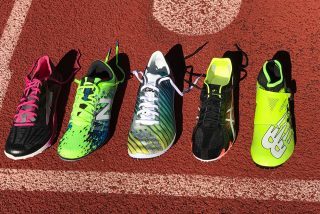

Today’s spikes are sexier than ever. Uppers are ultra-light and form-fitting, and soles are sculpted from high-tech materials to produce smooth, speedy toe-offs. New companies like Hoka One One, Altra and Under Armour have entered the field, driving innovation in cushioning, fit and quality, while established players keep raising the bar for lightweight comfort and ride. Never has there been more choices and more excellence waiting for you to lace up and go tear up the track.
RELATED: 2017 Running Gear Guide—Road Shoes
Middle-Distance/Distance Spikes
Brooks 3 ELMN8, $120
Weight: 4.1 oz. (unisex)
A carbon fiber torsion bar lies at the heart of the all-new third version of the ELMN8, Brooks’ top-of-the-line middle-distance spike. Designed with the help of elite athletes like Nick Symmonds and Katie Mackey, the shoe has an aggressive, springy ride with minimal midsole cushion. Testers universally enjoyed the fit of the mesh upper, reporting that while it felt ultra-light, it held comfortably and securely heel-to-toe. Powerful, top-level runners appreciated the snappy turnover while others found the dramatic toe spring and the rigidity of the plate too much for their stride.

Altra Golden Spike, $90
Weight: 5.3 oz. (unisex)
It’s not a surprise that Altra’s first and only spike is unique. Not only does it have 15mm of cushioning heel-to-toe, but the five spike pins fit into the rubber outsole with no rigid plate to hinder flexibility. Most importantly, the Golden Spike is foot shaped with plenty of room for a forefoot splay. Altra co-founder Golden Harper believes most spikes are “human torture devices” that don’t allow the foot to perform naturally. “While making shoes super tight may not kill performance too much in shorter races,” Harper said. “I believe it definitely hurts performance and increases injury risk on longer races.” Testers found the shoes comfortable but a bit squishy feeling—better for races of 3200m or longer.
Brooks The Wire 4, $120
Weight: 3.8 oz. (unisex)
Weighing in just under 4 ounces, The Wire 4 provides a ride more akin to a racing flat than what one usually expects in a spike. A full-length midsole provides cushioned landings while a flexible spike plate and substantial toe-spring allow for a rolling stride. Testers unanimously lauded the cushioning and ride. “I really liked how these shoes rolled,” said distance runner Will Kuene of Imperial, Neb. “It felt like barefoot running.” The upper wrapped feet snuggly, too snuggly at the toes for several testers—you may need a half size larger than normal.

Hoka One One Speed EVO R, $130
Weights: 4.1 oz. (men’s), 3.6 oz. (women’s)
Hoka’s second generation of spike refines the concepts they presented in their debut. Most uniquely, the spike plate and pin locations are not symmetrical on the left and right feet—both are tuned to turn left, as racers inevitably do on the track. Designed for milers like Leo Manzano and longer races, the Speed EVO R continues the company’s emphasis on protection with twice as much cushioning underfoot than most spikes. The foam underfoot also wraps up on the sides, creating a foot-centering “bucket seat.” Testers universally praised the ride, which was light and fast even with the extra cushion. The layered-mesh upper is also a bit more rugged than many competitors and held the foot securely, although a few testers reported it pinched or slipped in some places.
New Balance LD5000V4, $120
Weights: 4.6 oz. (men’s), 4.0 oz. (women’s)
New Balance’s pinnacle distance spike won rave reviews from our testers for its quick, smooth turnover that seemed to match and enhance their strides. Credit that to the thin, full-length Pebax plate that flexes and rebounds underfoot while gripping the track at every contact point with its small, sharp “shark’s teeth” that complement the four spike pins. A thin layer of New Balance’s light, responsive midsole foam provides just the right cushioning to feel fast enough for the mile but not beat testers up on longer races up to the 10,000m. This year’s upper has fewer layers welded to the airy mesh, making them feel too roomy in the toes for one tester, but all appreciated the snug, comfortable fit of the refined heel collar.
Puma evoSPEED Distance V5, $70
Weights: 5.5 oz. (men’s), 4.2 oz. (women’s)
Puma kept it simple building this entry-level spike that performs nicely. The relaxed, seamless upper and moderately-curved shape accommodate a variety of foot shapes, and the full-length EVA midsole cushions and supports regardless of your foot strike. The five-pin, horseshoe-shaped plate is both flexible and responsive. In all, the evoSPEED Distance V5 is a good value that can give runners a racing-flat-like option to transition into wearing a track spike.
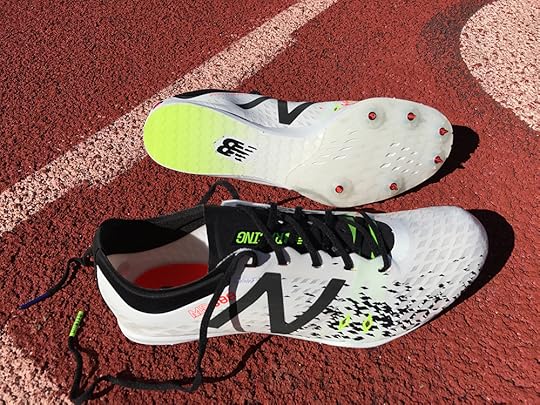
New Balance MD800v5, $120
Weights: 4.5 oz. (men’s), 3.9 oz. (women’s)
Suited for any race from the 800m to the 5,000m, the MD800v5 won accolades for their comfortable fit. “They’re very breathable, and once you tighten them up and start running, it feels like you’re running without any shoes on,” said Danny Bunker of Bucksport, Maine. The FantomFit upper is slightly lighter and more flexible in this year’s version, with a reinforcing strap ensuring a secure hold across the crucial ball of the foot. With six spike pin and a fairly rigid forefoot plate, this spike can harness a sprinter’s power, but distance runners didn’t find it at all overbuilt.
Saucony Ballista, $110
Weights: 3.1 oz. (men’s), 2.8 oz. (women’s)
Saucony used concepts from their award-winning ISOFIT road-running uppers when designing the Ballista. Rather than using an out layer of adjustable fingers, however, the Ballista’s laces tie into a strap that runs up the eyelet row and connects to supportive overlays, allowing for flexibility as the upper wraps the foot. Testers, particularly female ones, raved about the close, conforming fit. Olympian Duane Solomon helped in the design of the all-new Ballista, and those who run with his up-on-your-toes style most appreciated the aggressive, curved spike plate.

ASICS Gunlap, $100
Weight: 4.9 oz. (unisex)
Testers praised the forgiving fit of the upper and the underfoot flexibility of Asics’ lightest distance spike, designed for races from 800m to 3200m. Breathable mesh, generously reinforced with welded overlays, creates the comfortable fit while allowing heat and moisture to vent. The flexibility stems from a thin, “decoupled” Pebax spike plate that holds three spike pins on the big toe side and two along the outside. The only complaints came from two testers who felt the location of the spikes didn’t quite fall right and somewhat compromised their stride—reinforcing that all spikes should be tried before purchasing.
Saucony Endorphin, $110
Weights: 2.8 oz. (men’s), 2.5 oz. (women’s)
The lightest spike on the market, there’s not much to the Endorphin. The ride is close to the ground, with little support from the mesh upper, minimal cushioning and a small forefoot plate sliced with flex grooves. Testers who could handle feeling everything underfoot found the shoes felt fast and “kept you on your toes,” while others who needed more control and cushion found them “clunky.” The latter would be more comfortable in Saucony’s Vendetta ($65), which weighs twice as much and has the approachable, forgiving fit of their perennially-popular Kilkenny cross-country spike.
Under Armour Speedform Miler Pro, $120
Weight: 3.7 oz. (unisex)
For Under Armour’s first foray into track spikes they created an elite-level distance spike that draws on their apparel expertise. Like a high-end jacket, the pieces of the burrito-wrap upper are welded end-to-end and the welds covered with thin tape, create a smooth, seamless fit all the way around the foot. Underneath, the six-spike Pebax plate extends a tongue back into the midsole to produce push-off torque. The fit is narrow and the ride is aggressive. “It’s not for the faint of heart,” says creative designer Justin Howe. Testers concurred, reporting that they pinched the toes some, but rolled nicely and “felt very fast.”
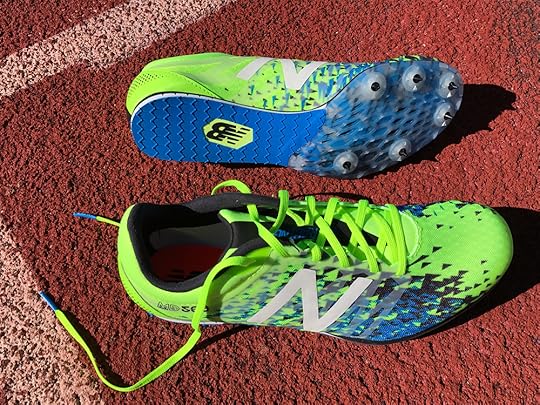
New Balance MD500v5, $70
Weights: 5.2 oz. (men’s), 4.5 oz. (women’s)
Affordable and versatile is the goal for New Balance’s entry-level spike, and it delivers with a ride surprisingly similar to their MD800. Both have a similar spike plate, but the MD500v5 has less of a midsole and a more padded upper that provides a forgiving but not quite as precise fit. That upper was refined in the v5, making it lighter and with a more open, flexible toe box. All in all, the MD500v5 would be a great choice for a young athlete experimenting with events, and should even be rugged enough to pass down to a younger sibling.
RELATED: Get A Sneak Peek At 7 Special-Edition Boston Marathon Shoes
Sprint Spikes
Brooks 2QW-K, $110
Weight: 5.7 oz. (unisex)
The 2QW-K is all about torque, with a full-length, semi-rigid plate that wraps up around the sides of the midfoot and heel and translates the force from your foot into the eight forefoot spike pins. The synthetic leather upper is reinforced with structured overlays that lock your foot in place. Testers found the toe box tight and the transition up to the spikes abrupt, so you need to be ready to stay high on your toes if you’re going to wear these shoes, best suited for the pure sprints.
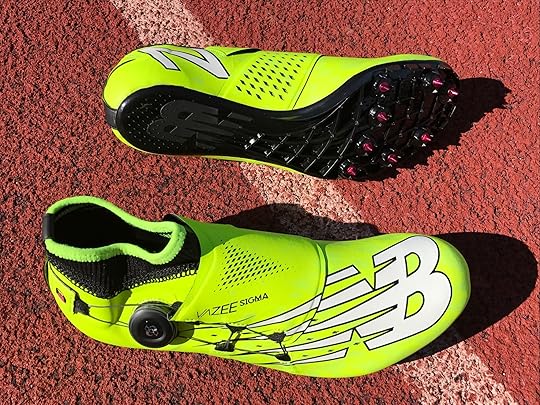
New Balance Vazee Sigma (SD200), $150
Weights: 6.2 oz. (men’s), 5.6 oz. (women’s)
The new Vazee Sigma uses a boa lacing system connected to a wrap that snugs the arch and heel to lock your foot down onto the eight-pin, rigid spike plate below, eliminating any motion. Testers appreciated the fit, which starts out generous and snugs down comfortably in the mid-foot while leaving enough room for normal toe movement. They also found the booty ankle collar a nice touch. The rigid, full-length plate doesn’t have quite as much toe spring as some others, which complemented powerful testers’ strides.
Under Armour Speedform Sprint Pro, $120
Weight: 6.9 oz. (unisex)
Under Armour’s first sprint spike takes full advantage of the company’s “apparel for feet” philosophy. Three-dimensional molding technology, such as used to make sports bras, creates a shaped heel that cradles underfoot and snugs around the ankle without limiting movement and power. The heel is welded seamlessly to a soft, stretchy synthetic upper, deemed the most comfortable among sprint spikes in this review. Underfoot, the full-length eight-pin plate has both a strong toe spring and some flexibility, making the spike suitable for many runners and races up to the 400m.
Saucony Showdown 4, $110
Weights: 5.2 oz. (men’s), 4.5 oz. (women’s)
Saucony’s ISOFIT lacing was first developed for the Showdown, and it has reached its pinnacle expression here. The laces tie into eight flexible fingers that wrap around an inner booty and through the outer upper, snugging the vamp to the exact shape of your foot. The heel is cupped and holds your ankle like a soccer cleat. Once laced down, your foot isn’t going anywhere, and all of your force is transferred to the full-length, high-rebound 10-spike plate. Testers heaped praise on the security and comfort of the fit and the superior grip.
Saucony Spitfire 4, $65
Weights: 5.4 oz. (men’s), 4.7 oz. (women’s)
An entry-level spike aimed at first-time sprinters, the Spitfire has premium DNA in an affordable and forgiving package. The fit is roomier and the three-quarter length plate is more flexible than their top-end Showdown, allowing for a wide range of abilities and events, from the long jump to the 400m. Testers found the spike held their foot tightly enough that it didn’t move around, and appreciated the comfort of the padded upper.
RELATED: 2017 Running Gear Guide—Trail Shoes
The post A Rundown Of The Year’s Speediest Track Spikes appeared first on Competitor.com.
March 22, 2017
Why The Boston Marathon Is So Special
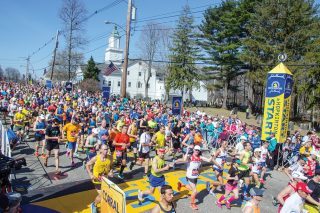

Photo: Courtesy of Boston Athletic Association
In times like these, races like the Boston Marathon bring people together. How? It’s a combination of not only the race’s rich history, but the area’s too. Plus the screaming locals, and the achievement that qualifying—and running—the world’s grandest marathon bestows on its runners.
All marathons may be 26.2 miles in length, but there is more contained within the 26.2 going from the small bedroom community of Hopkinton, Mass., to the big city of Boston each spring than in any other marathon in the world. The history of the sport runs this way, as does the founding of the nation and its freedoms itself.
This year Boston will celebrate its 121st running, and as throughout its century-plus time frame, regardless of what woes the nation is wrestling with, for that one day, Patriot’s Day, the marathon in Boston will illuminate the best in the human spirit as thousands of disparate impulses flow into close harmony along its historic route.
Patriot’s Day in Boston doesn’t just celebrate the finest runners in the world, it also commemorates the 1775 Battles of LexingtonConcord, the opening salvos in the U.S. War of Independence against Great Britain.
This overlay of historic reverence casts a special aura around the classic Patriots’ Day footrace. You hear it amid the nervous prerace patter on the Hopkinton town green with the cadence of the drum and fife corps before the start. You see it in the red, white and blue bunting draped along the starter’s podium on Main Street, and in the inward gaze of competitors zeroing in on a major effort beneath the World War I doughboy statue adjacent to the start line.
“This is the Mecca,” affirms official Boston Marathon greeter Tommy Leonard, founder of the Falmouth Road Race on Cape Cod, and former bartender at the legendary Eliot Lounge, the one-time Boston runner’s bar that stood on the corner of Mass and Comm avenues, a half-mile from the marathon finish line until the marathon’s 100th birthday in 1996. “There is nothing like the heartbeat in old Beantown on marathon day.”

C08AHA Runners at the finish of the 1981 Boston Marathon. Photo: Courtesy of Alamy
First proclaimed a holiday in Massachusetts in 1894 by Governor Frederic T. Greenhalge, Patriots’ Day was originally celebrated on April 19, the actual anniversary of the Minutemen battles. Since 1969, the holiday has been marked on the third Monday of April, which coincides with the first day of a vacation week for public schools and a school holiday for many local public and private colleges and universities, too. The release of students adds to the boisterous nature of the marathon throngs lining both sides of the marathon route, most notably in Wellesley at halfway—where coeds from Wellesley College create a Tunnel of Screams that urge the racers on, but at times compel them to stay and absorb the affection.
The marathon, begun as connection between Athenian and American struggles for liberty, has woven its own historic tapestry as the race threads through eight cities and towns, drawing competitors and spectators alike into a unity of purpose.
“Boston isn’t the course. It’s not the people who run the race. I am thoroughly convinced it’s the people who line the course,” recalled Minnesota native Garry Bjorklund after leading the 1979 Boston Marathon until the hills of Newton before eventually finishing fifth. “It’s a feeling that makes you dizzy, knowing you are leading the Boston Marathon. You don’t have people like you have in Boston anywhere else.”
“And they don’t care if you win,” said threetime Boston women’s division runner-up and Quincy, Mass., native Patti Dillon. “They just want you to do good. They don’t want you to quit; they don’t like quitters. And it helps when you know they are rooting for you. I don’t know, it just gives you something extra.”

Photo: Courtesy of Boston Athletic Association
There are bigger marathons in the world; faster ones, too. But there remains something seminal about Boston. Perhaps it is the long, hard winter that precedes it, and the promise of the coming rebirth that it heralds.
“The celebration of the Boston Marathon? Really, the rite of spring, right there,” was how former Brookline resident and marathon fan Paul Marshall always thinks of Patriots’ Day.
When the Boston Athletic Association instituted time qualifying standards in 1970 to control the size of the field after the race grew to more than 1,000 entrants, it unwittingly created a special “people’s Olympics” quality to the old race, a standard for runners to achieve. Today, runners from around the world dream of posting a Boston qualifier, knowing that only a special few will have earned the honor of pinning on a Boston number. And the people of Boston and the surrounding area feel just the same about the runners.
“It’s overwhelming. It’s the marathoner’s experience of a lifetime,” said 1968 Boston champion Amby Burfoot.
“There is a tremendous amount of energy floating around Boston on marathon weekend,” said Burfoot’s former Wesleyan University roommate and four-time Boston champion Bill Rodgers. “It’s the epitome of a true sporting event, in the classical sense.”
RELATED: Kathrine Switzer On Her Return to the Boston Marathon
From its humble start in 1897 when 15 runners toed the scratch line in Ashland, Mass.—back when the race was still measured at 24.5 miles (39.4 km)—the Boston Marathon has sheltered the flame of marathoning that first took form in the inaugural Olympic Games of the modern era a year earlier in Athens, in 1896. There, to commemorate the mythical run of army messenger Pheidippides bringing word of a great military victory over an invading Persian force to the capital in 492 B.C., Olympic fathers instituted a distance run of 40 kilometers from the plains of Marathon to the city of Athens. With 60,000 cheering Greeks in attendance, including their king, Greek shepherd Spyridon Louis arrived in the Olympic stadium as the first Olympic Marathon champion.
So moved were members of the U.S. team by that new event that members of the Boston Athletic Association in attendance decided on the boat ride home across the Atlantic to create just such a race back home the following spring.
“It has such deep roots, such tradition, it’s the race everyone wants to do,” said Californian Bob Molinatti, multiple-time wheelchair competitor. “You can run any other marathon and people will be impressed. But when you run Boston, it’s making a statement. When you look at the front row at Boston, you are looking at the cream of the crop.”
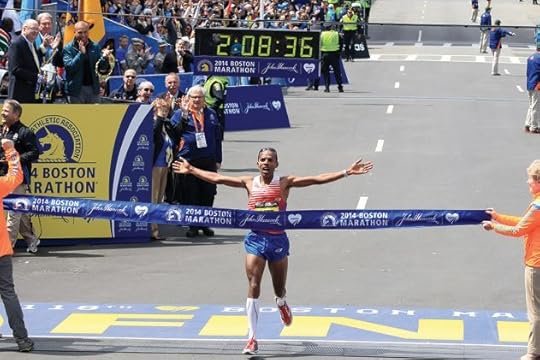
Photo: Photorun.net
Boston College track coach Randy Thomas finished fifth in Boston in 1978. The Fitchburg, Mass., native says it this way: “It’s a day that belongs to the runners, and a day that belongs to the spectators, the whole million of them. It’s the premier race in everyone’s mind, a great day for the city, one that gives it its reputation throughout the world.”
It took until the mid-1970s before distance running caught fire and became the social movement that continues to this day. In the decades before it was more of a quirky pastime practiced by young men with wiry frames and faraway gazes in out-of-the-way places. Yet there was something about its hard, flinty nature that appealed to the people in and around Boston. What is that old line—“If the Pilgrims had landed in California, New England would still be uninhabited”?
“At times the noise was deafening,” said Alberto Salazar of his 1982 Duel in the Sun victory over Beardsley.
“When you have a crowd that big, it’s almost physically impossible to control them if they don’t want to be controlled,” explained former longtime race director Will Cloney.
“This is the Kentucky Derby for all marathon runners,” said Jock Semple in his Scottish brogue. Semple finished seventh in 1930, but for decades after that, he handled all entries for the marathon from his physical therapy office in the Boston Garden where he worked on the Boston Celtics and Boston Bruins. His boss, Walter Brown, didn’t just own the Garden and the two Boston pro sports teams, he was a member of the founding family of the Boston Marathon as well.
RELATED: Galen Rupp Makes His Boston Marathon Debut Amid A Storm
The importance of the Boston Marathon beyond the sporting realm revealed itself anew in 2014. Coming one year after the savage bombings along the Boylston Street finish by two radicalized Chechnyan brothers, Meb Keflezighi’s front-running, then hanging-on victory, the first by an American male since 1983, redeemed the hallowed ground not only for all runners, but in the name of all immigrants who had come to this country for the open-hearted welcome it has always represented.
In a country currently rife with division, this annual coming together is a reminder of those qualities that link us in a common bond and transcend those that separate us. The message of Boston is clear and unassailable: When thousands of runners from around the nation and world take on a daunting distance while being encouraged by huge, welcoming throngs on roads where history has been formed, the world becomes a better place.
RELATED: Boston’s Hop 21 Is Making The Long Training Run Fun Again
The post Why The Boston Marathon Is So Special appeared first on Competitor.com.
March 21, 2017
5 New Faces Making Their Boston Marathon Debut
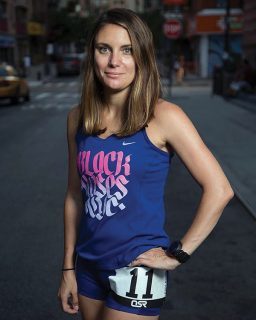
Credit: Graham Macindoe
For many runners, qualifying for the Boston Marathon is a triumphant achievement in which the years of training and logging the miles all culminates on race day. This year, 30,000 official participants have been accepted to toe the start line of this most coveted race. For more than 2,400 of them, it will be their first Boston Marathon. We asked some of our readers who are running Boston for the first time this year to share in their own words how they qualified—and what motivated them to chase a BQ. Their stories may vary, from the 60-year-old who is battling cancer to the mom of two who wants to set a good example for her sons, but they share a common spirit of perseverance and determination that, come race day, will forever define them as Boston Marathoners.
Erin Ryder, 36, Jersey City, N.J.
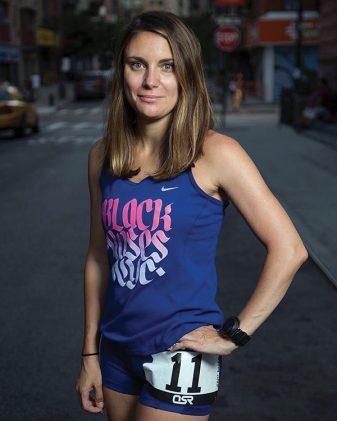
Credit: Graham Macindoe
Qualifying race: 2016 New Jersey Marathon
“Boston this April will be my 10th marathon. I ran my first in New York City in 2011 after losing my father to cancer in 2009, and was compelled to run with the American Cancer Society’s DetermiNation team. My goal for Boston is to run feeling strong and hopefully requalify. I grew up in a running family—both my sister and I ran cross country and track, and it’s an anchor in my life. This race coming up is so meaningful—it’s a race that has to be earned. It allows me to reflect on the past several years, the hard work put in, and the growth as a result. My full family will also be there for the first time since my first marathon, this time with one additional niece and nephew, along with their big sister.”
Brooke Magni, 34, Lancaster, Pa.
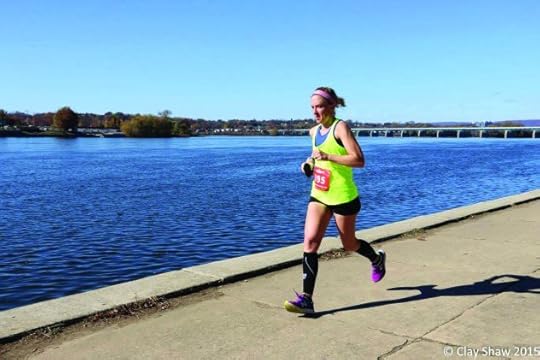
Qualifying race: 2015 Harrisburg Marathon
“I wanted to run Boston more than anything in the world. After two disaster marathons I started training with a girlfriend, and not only qualified but also placed second female overall in my BQ race! I am a mom of two boys and I think it’s so important to set a good example that hard work pays off. I also wanted to show myself that there was nothing I could not accomplish. No matter how hard life can be or how bad your mistakes may seem, there can always be redemption. Boston 2017 will have a much deeper meaning to me than any other race ever has or ever will, and I am very excited to share it with my family.”
Fernando De Samaniego Steta, 32, San Francisco
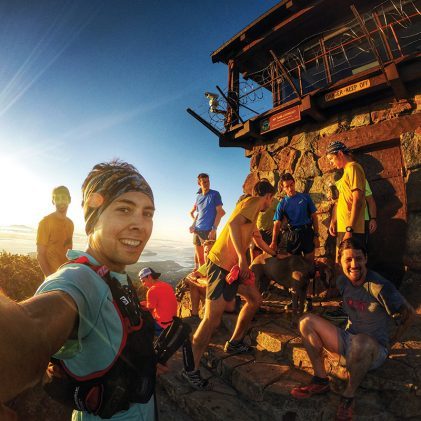
Qualifying race: 2016 Oakland Marathon
“When I got into long-distance running I heard about Boston, like any other marathoner, and always thought about running it. Then my life changed and I moved to San Francisco. At the time I read Christopher McDougall’s famous book Born to Run. The combination of that book and meeting the ultra running community in the Bay Area motivated me to transition into longer races on trails and mountains. Since 2013 I’ve finished numerous 50-milers, 100Ks and 100-mile races on trails and on the mountains. However, the desire to run Boston reemerged through the same ultra community. Alex Varner, a well-known distance runner in the area and one of my best friends, always talked wonders about Boston. For the last three years, a big group from the San Francisco Running Company (who I run with) has gone to Boston and I’ve missed that every single year. The FOMO was so big last year that I decided to train for a BQ and join my friends in Boston.”
Stephen Liegghio, 47, Mount Clemens, Mich.
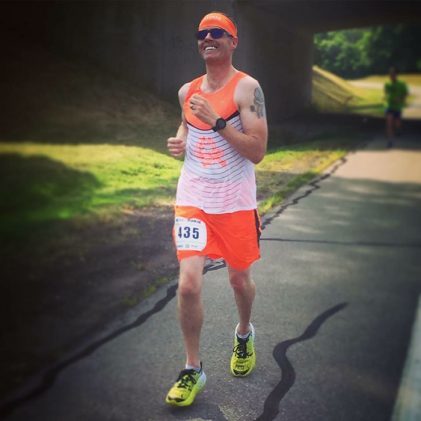
Qualifying race: 2016 Myrtle Beach Marathon
“I used to be a martial arts instructor. Then in 2006 I had a severe injury (compound tib/ fib fracture) that forced me to stop teaching. Over the next two years I wasn’t able to walk, and had four surgeries to repair the damage. When I got remarried in July of 2009, I saw pictures from my honeymoon and realized that I had gotten fat. That motivated me to start walking three hours a day, and I lost 70 pounds by the end of that year. In 2010, I ran my first half marathon and I continued with my running over the next couple of years until August of 2012, when I donated a kidney to a complete stranger and had to take a break. A couple years later I ran the Chicago Marathon because that’s where my donor recipient lives and I wanted him to be at the finish. After Chicago I had no intention of running another marathon. Then I watched the 2015 Boston Marathon on TV and felt maybe it was something I could do—it soon went from being something I would like to do to something that I had to do. What I’m most excited about this year is that my recipient will once again be waiting at the finish line when I get there.”
Pat Staveley, 60, Calgary, Canada
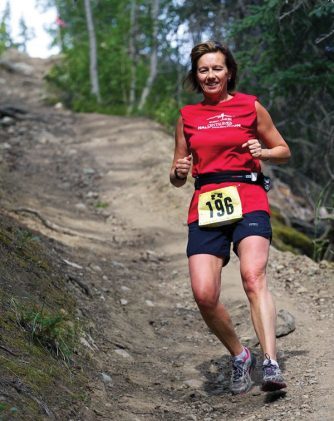
Qualifying race: 2015 Portland Marathon
“I started running at about age 52. I also started weight training with an amazing trainer named Janice, who helped me learn to run, become strong, lose weight and eat healthy. She got me through four major abdominal surgeries and I was able to run half marathons 11 weeks after the surgeries. After doing several marathons and some ultra marathons, including the Grand Canyon Rim to Rim to Rim, I wanted to see if I could do a speedier run, and qualifying for Boston seemed like a great goal. Janice trained me to pick up speed, and in October 2015 I qualified for Boston in Portland, Ore. So excited to be going! September 2016 I was diagnosed with stage IV colon cancer, but I am still working out, kickboxing and getting back to running. With my friends, including Janice, traveling to Boston with me in April, I will show up and run/walk this amazing race!”
RELATED: Why The Boston Marathon Is So Special
The post 5 New Faces Making Their Boston Marathon Debut appeared first on Competitor.com.
Ryan Hall's Blog
- Ryan Hall's profile
- 21 followers



